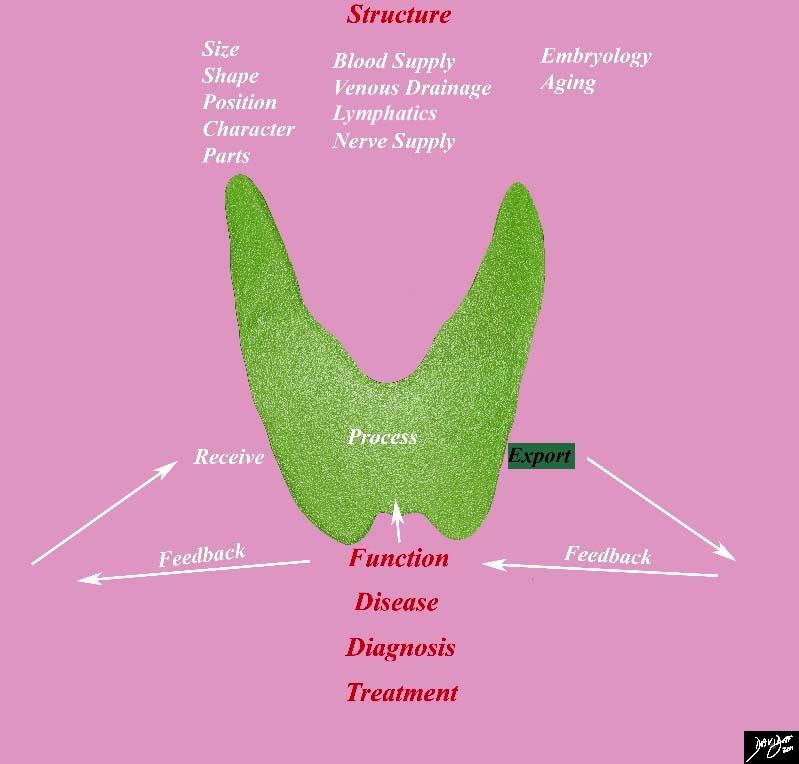The Common vein Copyright 2010
Introduction
In the thyroid gland itself there are two types of thyroid hormones, triiodothyronine or T3 and tetraiodothyronine or also called T4, as reviewed previously the name explains the structure and nature of each hormone. Iodine as molecule represents 58% of T3 weights and 65% of T4 weigths and this feature is unique in thyroid hormones.

Export Function |
|
This diagram frames the underlying principles and approach to the thyroid in this module and focuses on the export function of the thyroid Image Courtesy Ashley Davidoff MD 93852g05.8sb03c |
In the thyroid gland the protein that serves as storage of all the tyrosine residues is called thyroglobulin. On a stady state thyroid hormones are couple from thyroglobulin through enzimatic reactions in order to form the final T3 and T4 and release them to the blood stream, if due to positive feedback or external stimuli TSH levels increases, then there will be an increase in the amount and rate of thryoid hormone production and secretion, thryoid hormone secretion is also stimulated abnormaly by some medications like lithium. The oposite occurs with a negative feedback or in abnormal states like iodine deficiency.
In the blood stream both thyroid hormones circulate bound to proteins like thyroxin-binding protein (TBG), transthyretin also called thyroxin-binding prealbumin (TBPA) and albumin. Small amounts of T3 and T4 can be find free in the circulation, certanly with diagnostic value since the increase or decrease of proteins in plasma does not affect the free thyroid hormone amount. Also very important is the fact that only the free fraction of the hormone is active.
The fact that thyroid hormones remain almost entirely bind to plasma proteins provides an stable circulation of thyroid hormone pool with approximately 7 days plasma half life providing an homogeneous distribution to every organ and peripheral tissue in general.
In the peripheral tissue T4 can be deionidase and converted in T3 by the mediation of the enzime 5’-deiodinase.
Thyroid hormones reach through the blood stream every target organ, with the capacity to cross the cell membrane they bind intracellular receptors and activate intracelular reactions regulating organs and systems in the human body. One example is the brain, one of the biggest target for the thyroid hormones specially during fetal development when the brain is maturating.
Almost all iodine molecules are reused by the thyroid gland and the rest is excreted in the urine.
